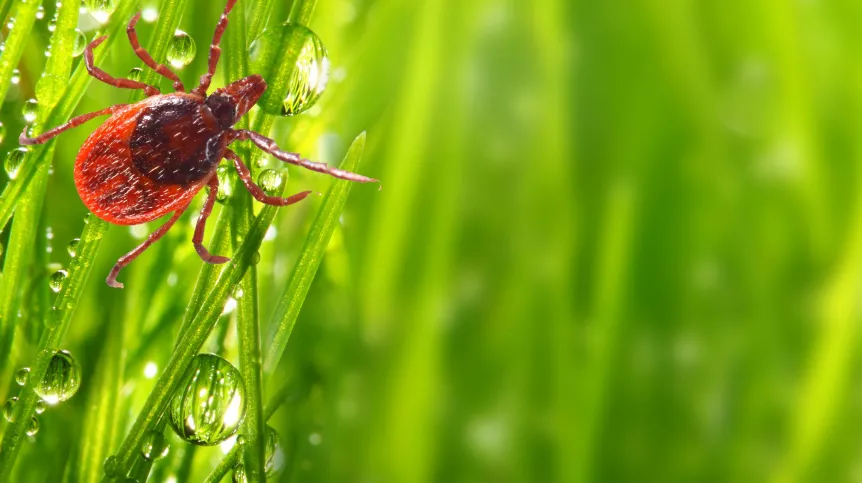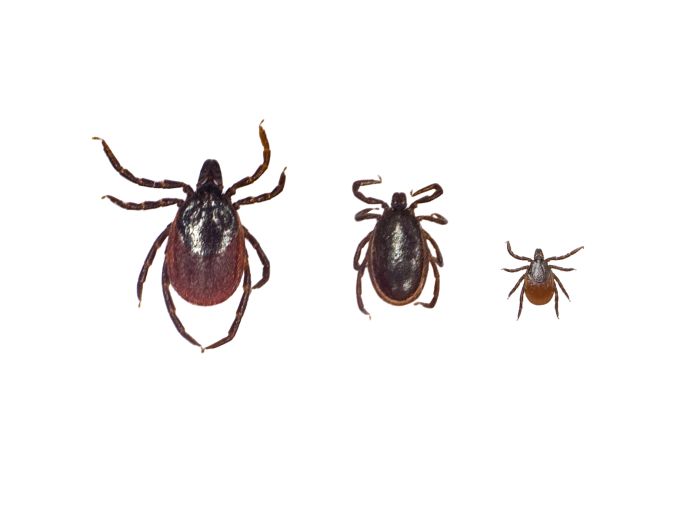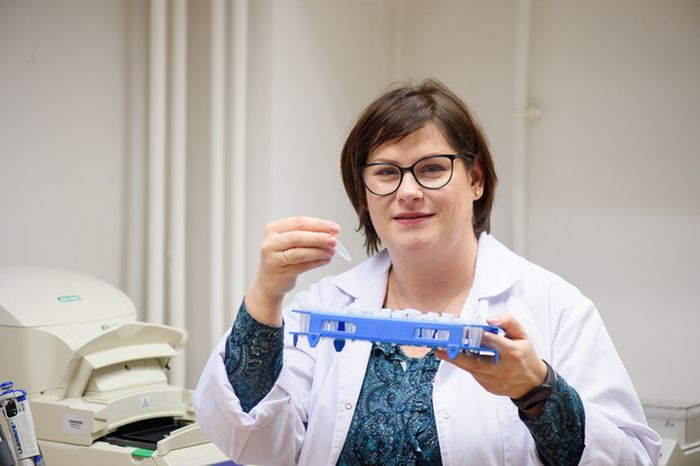
Ticks transmit not only Lyme disease and tick-borne encephalitis, but also other diseases, such as neoehrlichiosis. A team of scientists from the University of Warmia and Mazury conducts research on the bacteria that cause this little-known disease in humans.
'Neoerhlichia mikurensis are bacteria pathogenic to humans; their vectors are ticks. They cause severe symptoms. The problem is that these symptoms are non-specific and general, different in different people and similar to the symptoms of other diseases', reports Dr. Katarzyna Kubiak from the Department of Medical Biology of the School of Public Health of the University of Warmia and Mazury, quoted on the university's website.
The symptoms of human neoehrlichiosis are not yet well described in the scientific literature, as the pathogen has only been known since recently. 'Its discovery in ticks was described in the early 2000s and since then it has been identified in tick populations in Europe, Asia and North America', we read on the University of Warmia and Mazury website. However, in the publications there are more and more reports of cases of human neoehrlichiosis in these areas.

When infected with Neoerhlichia mikurensis, patients have a high fever up to 40 degrees Celsius, cough, joint pain, allergies, nausea, diarrhoea, thrombotic complications, and even strokes or enlarged spleen and liver. According to Dr. Kubiak, 'doctors have difficulties in linking such different and non-specific ailments in patients with neoehrlichiosis and treat people blindly, which means for a long time and often with little effect'.
'While the symptoms of Lyme disease and TBE can be diagnosed by doctors, the symptoms of neoehrlichiosis after being bitten by a tick infected with Neoerhlichia mikurensis cannot. Patients usually do not associate these symptoms with tick bites either', emphasises Dr. Katarzyna Kubiak.
The team conducting research on Neoerhlichia mikurensis in Poland is working to increase knowledge and awareness about this disease. 'Greater awareness of doctors about the occurrence of diseases transmitted by ticks, other than Lyme disease and tick-borne encephalitis, will contribute to faster recognition of non-specific symptoms and selection of more effective methods of their treatment', says Dr. Katarzyna Kubiak.

Awareness and knowledge about the risks associated with ticks are also the basis for the prevention of infections occurring after being bitten by these parasites. Scientists from the University of Warmia and Mazury are involved in a large project, in which scientists from 16 European countries, including Germany, Portugal, Denmark and Turkey, will examine the state of knowledge and awareness of Europeans about ticks and the pathogens and diseases they carry, and ways to prevent tick bites. The initiator and leader of this project is Professor Agustin Estrada-Peña from the University of Zaragoza in Spain. In Poland, surveys will be conducted at the University of Warmia and Mazury and the University of Wrocław. According to Dr. Kubiak, the survey results will help 'better plan educational programs to raise people's knowledge and awareness that ticks are not just Lyme disease and tick-borne encephalitis'.
'In addition to the little-known ehrlichiosis, people are also exposed to human anaplasmosis, human babesiosis, rickettsiosis and tick-borne relapsing fever', says Dr. Kubiak. The survey on knowledge about ticks will soon be distributed among all University of Warmia and Mazury employees and students.
The team of scientists studying Neoerhlichia mikurensis in Poland consists of Dr. Kubiak, Dr. Małgorzata Dmitryjuk, a professor at the University of Warmia and Mazury, Magdalena Szczotko from the Department of Biochemistry at the Faculty of Biology and Biotechnology, and Dr. Mirosław Michalski from the Department of Parasitology and Invasive Diseases of the Faculty of Veterinary Medicine. Last year, scientists from the University of Warmia and Mazury started collaboration in this area with scientists from the NOVA Institute of Hygiene and Tropical Medicine in Lisbon, led by Professor Ana Domingos. (PAP)
amk/ bar/ kap/
tr. RL













